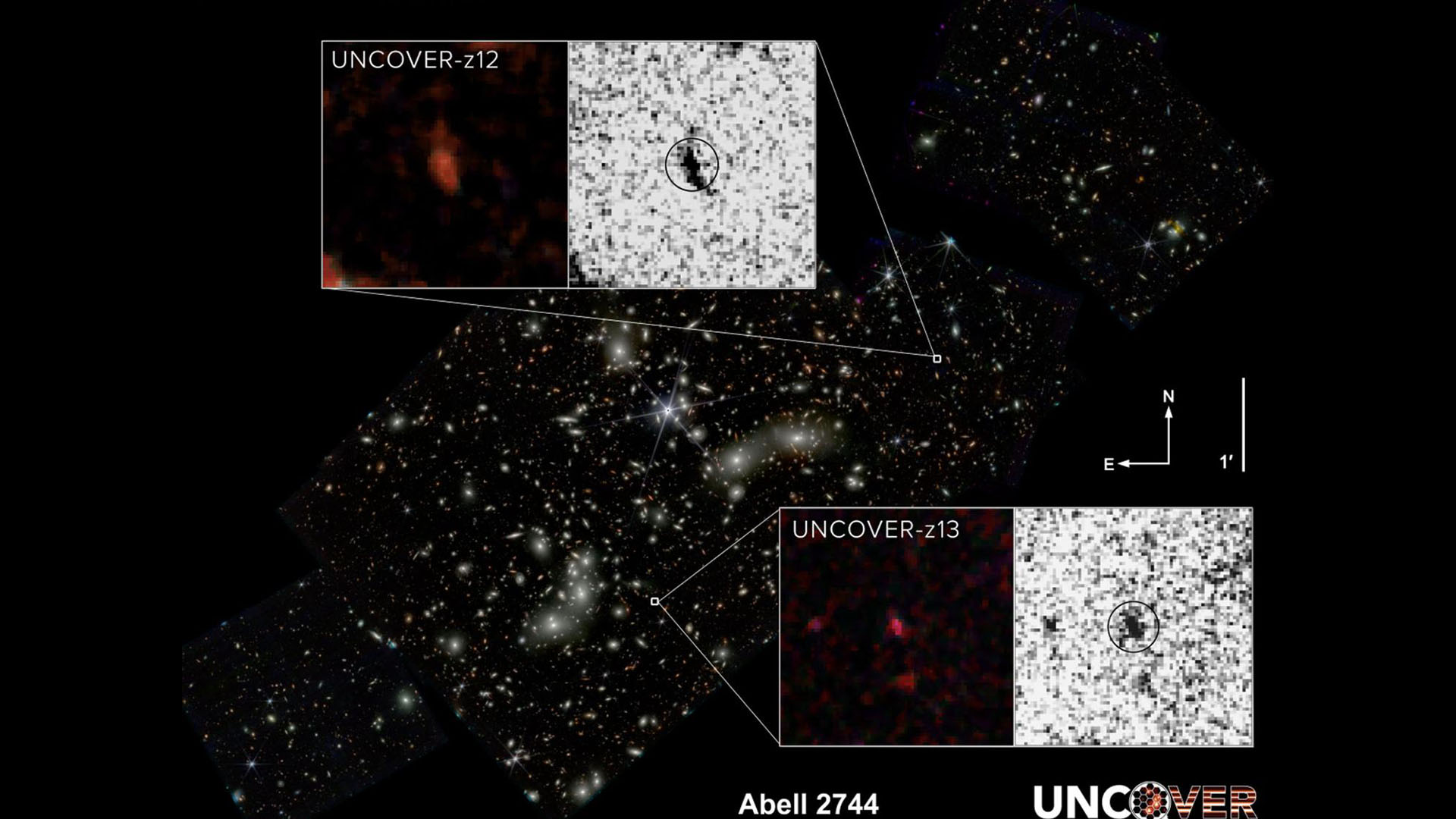
Astronomers using the James Webb Space Telescope (JWST) have discovered two of the oldest and most distant galaxies in the known universe, dating to just 330 million years after the Big Bang.
These ancient objects — estimated to be the second and fourth most distant galaxies ever detected — fall just shy of the earliest known galaxy, named JADES-GS-z13-0, which was previously spotted by JWST at around 300 million years after the dawn of time. The light from all three of these immensely old galaxies traveled for more than 13 billion years to reach JWST's lens.
"The light from these galaxies is ancient, about three times older than the Earth," Joel Leja, assistant professor of astronomy and astrophysics at Pennsylvania State University and co-author of a new study on the galaxies, said in a statement. "It is only by their light that we can begin to understand the exotic physics that governed the [galaxies] near the cosmic dawn."
Related: The early universe was crammed with stars 10,000 times the size of our sun, new study suggests
Leja and colleagues detected the newfound galaxies in a region of space called Pandora's Cluster, or Abell 2744 — an immense cluster of galaxies containing the equivalent mass of 4 trillion suns, according to NASA.
Galaxy clusters are the most massive structures in the universe bound by gravity. However, the two newfound ancient galaxies weren't discovered within the cluster itself — they were discovered behind it, thanks to a natural magnifying effect called gravitational lensing. First predicted to exist by Albert Einstein, gravitational lensing occurs when an ultra-massive object curves the space around it, bending and magnifying light that passes nearby.
In the new JWST observations, the Pandora Cluster's mass created a gravitational lens powerful enough to magnify the light of the two galaxies, despite their being located many billions of light-years behind Pandora.
This zoomed-in view revealed that the two ancient galaxies appear to be significantly bigger than other galaxies observed at the same point in cosmic history, the researchers wrote. The galaxies were big enough, in fact, that the researchers could make out distinct shapes.
"Previously discovered galaxies at these distances are point sources — they appear as a dot in our images," lead study author Bingjie Wang, a postdoctoral scholar at Penn State, said in the statement. "But one of ours appears elongated, almost like a peanut, and the other looks like a fluffy ball."
"It is unclear if the difference in size is due to how the stars formed or what happened to them after they formed, but the diversity in the galaxy properties is really interesting," Wang added.
The new galaxies join a growing list of extremely ancient objects detected by JWST. Recently, the telescope revealed the oldest active supermassive black hole in the known universe, dating to about 450 million years after the Big Bang, as well as the oldest evidence of organic molecules, which was located in a cloud roughly 12.3 billion light-years from Earth.
The new research was published Nov. 13 in The Astrophysical Journal Letters.







